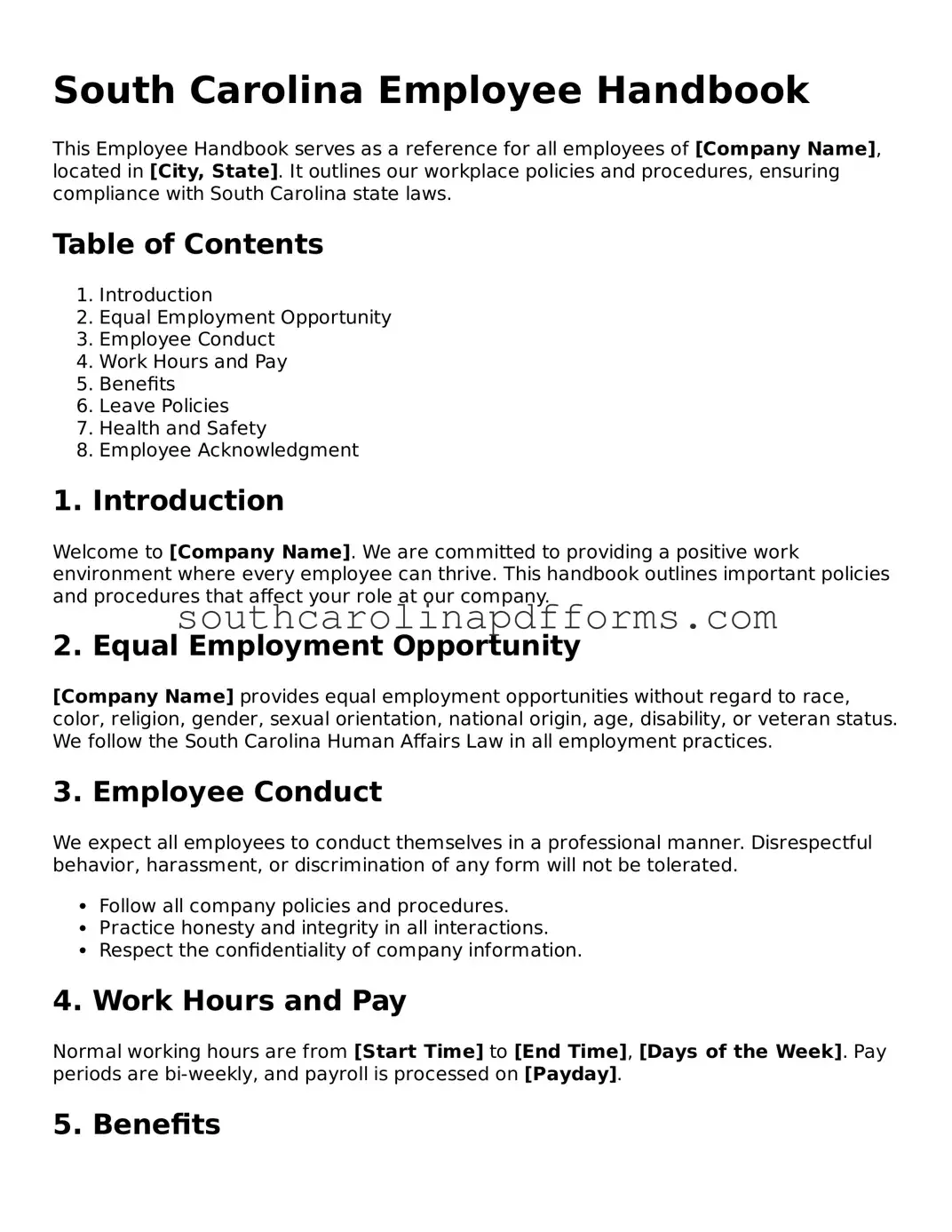Attorney-Approved South Carolina Employee Handbook Document
The South Carolina Employee Handbook form is a vital document that outlines the policies, procedures, and expectations for employees within a company. This form serves as a guide to help employees understand their rights and responsibilities while fostering a positive work environment. By clearly communicating these important details, employers can promote transparency and consistency in the workplace.
Access Employee Handbook Here
